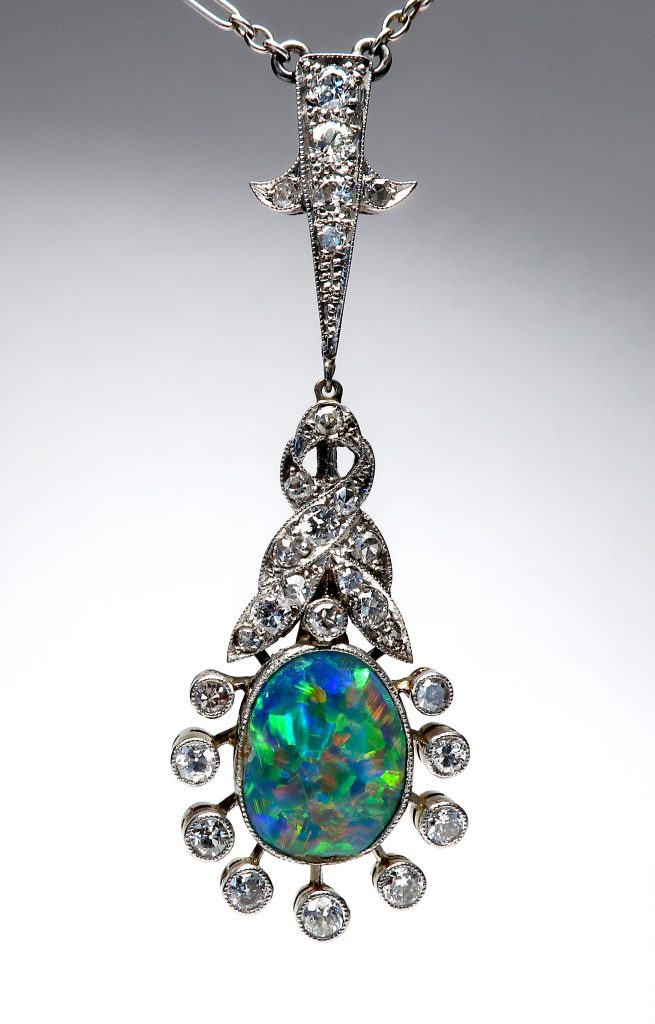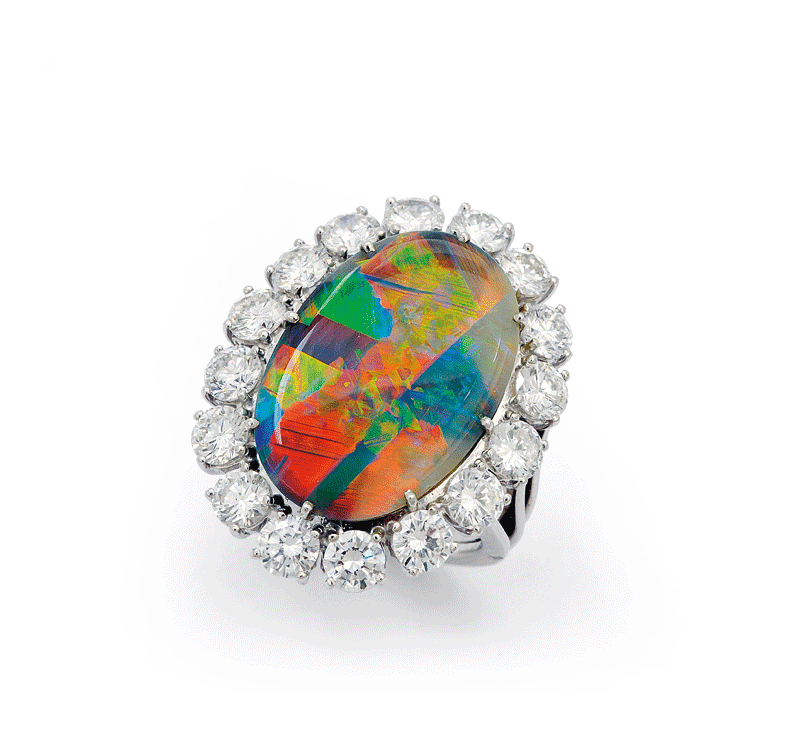
Offered at auction June 2020
Opal has fascinated people for thousands of years. Its hypnotic iridescent spectrum of colours flash as the gem moves. The colours in an opal float mysteriously from within its translucent depths.
Sources
While many people think of opal as a distinctly Australian gem, the ancient Romans were very enthusiastic about opal. Pliny the Elder, a scholar in ancient Rome, 2000 years ago, wrote that opals “combine…the brilliant qualities of the most valuable gems…all combined together in incredible brilliance…they defy description”1… . Opals known in ancient Rome were not from Australia, they were likely from what is now known as Slovenia.
These days, most opal in the market is from either the classic sources in Australia, or Mexico (for “fire” opal), or from the relatively new source in Ethiopia.
Opal is known under many different variety names. These names usually describe the body of the opal. The body colour is the appearance the gem has before you take the flashes of colour into consideration.
Opal Types
Black opal has a black to dark grey body colour. The dark background shows the flashes of colour to their best effect. Black opal from Lightning Ridge, in Australia’s New South Wales, is the most famous. Other sources do produce opal with a dark background, often dark grey, or from Ethiopia it’s sometimes dark brown. Often black opal is opaque. Black opal is the most rare and valuable opal.
Semi-black opal has a dark body colour, while not quite “black” it’s next in darkness. Semi-black opal can come from Lightning Ridge and from other sources, including Mintabie in South Australia.
White opal has, as you might guess, a white body colour. The flashes of colour are seen against a light background. The best known source for white opal is a town in South Australia called “Coober Pedy”.
Fire opal has an orange or red body colour, like flames in a fire. The most famous source is Mexico. Often fire opal has no flashes of colour at all, but it is still prized for its near-transparent appearance, and is often faceted, with small flat faces, like a diamond or other gems.
Crystal opal is often colourless, and very close to transparent, but with a “play of colour”, those famous flashes of colour that makes opal so desirable. In a crystal opal, the colours are particularly mysterious as they float in the clear colourless gem.
Colours of Flashes
There is a hierarchy of desired colours in opal. Flashes of red are the most desired, and if you have red, you’ll usually find the other colours present in the opal’s flashes. Some opals may show just green and blue colours, and can be quite lovely.
Patterns
Pattern of colours is another thing we note. One pattern, of geometric blocks of colour flashes is called “harlequin”, is rare, and highly desired.
“Rolling flash” is a pattern of play-of-colour that has areas of colour that may roll over large parts of the surface of the opal, changing colours as the opal is moved.
A common pattern is called “pinfire”. Opals that have this pattern show tiny dots of colours scattered and shifting as the viewer’s angle changes.
One of Queen Victoria’s favourite gems was opal, and during her long reign, several of the Australian localities were opened up by the colonists. The discoveries of opal in Australia meant that there was a renewed interest in opal in Europe, in the nineteenth century.
The discovery of opal in Ethiopia has produced a new source of striking and beautiful gems. The opals from this African nation range from crystal opal to black. The film Uncut Gems features an Ethiopian black opal.

(1: Pliny: Natural History Books 36-37, Translation by D.E. Eicholz, Loeb Classical Library, Harvard University Press, Cambridge Mass, 1962)
